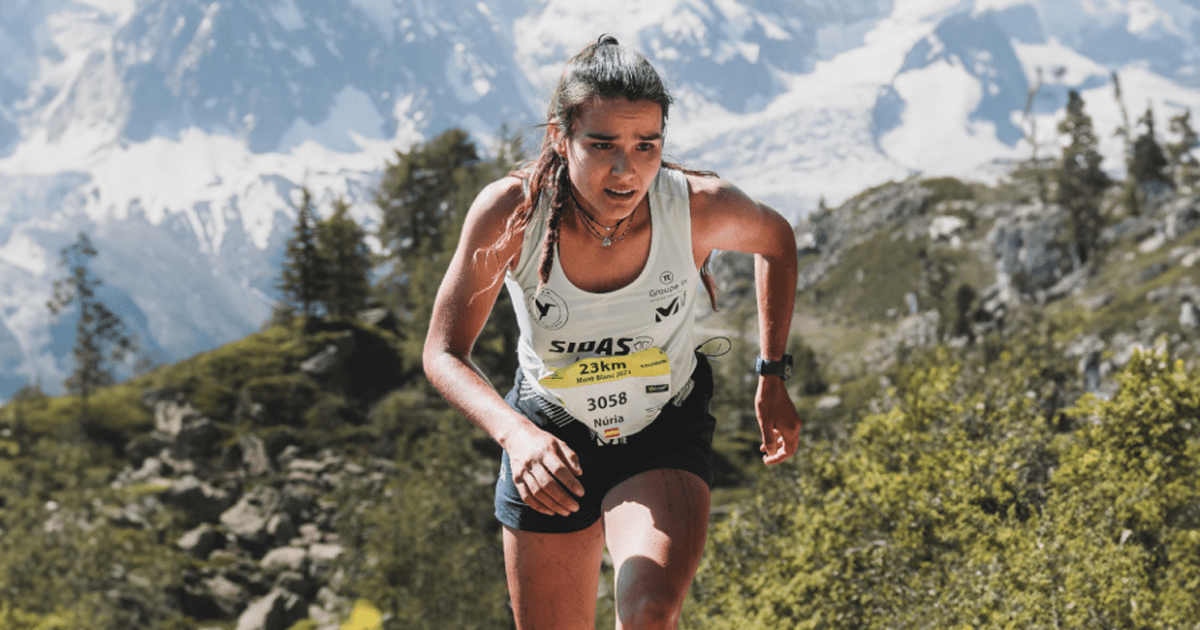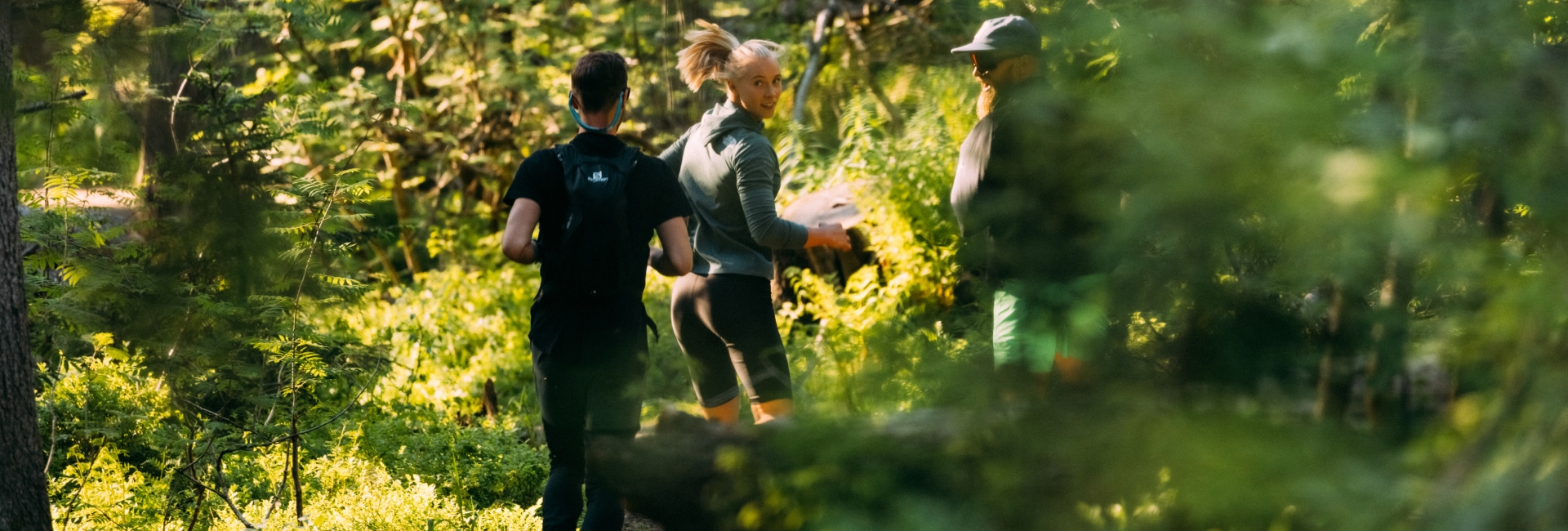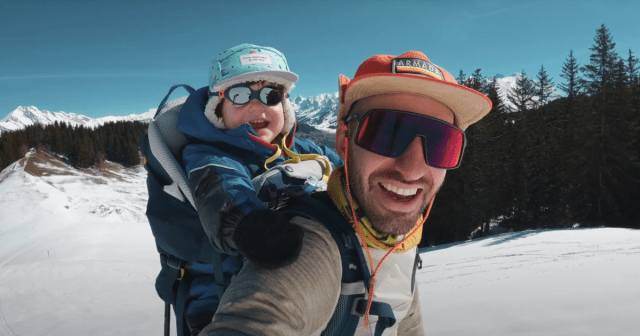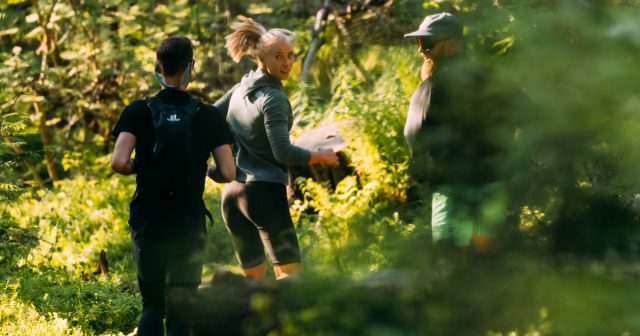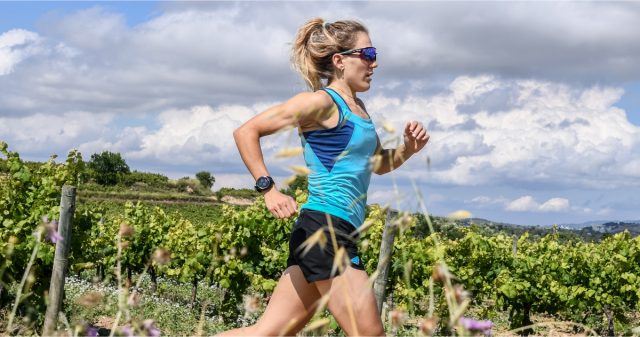What’s VK? And an FKT? Out and back? Trail running, with its exhilarating terrain and breathtaking views, has become increasingly popular in recent years. But with its own unique jargon and terminology is easy to get lost before you even hit the trails.
If you’re a beginner venturing into the world of trail running or an experienced runner looking to expand your vocabulary, read on. We’ve compiled a concise collection of essential terms and phrases that every trail runner should know. From technical trail lingo to gear and race-specific terms, this glossary will have you speaking the language of trail running in no time. Let’s dive in!
A
Aid Station: A designated area along a trail race where runners can rest, receive support, have a bite, and replenish their supplies. This is also a good place to have a nap if you’re in the middle of an ultra-trail race. See ultra-trail running.
Altitude Training: Where legends are made. Training at higher elevations to adapt to decreased oxygen levels and improve performance in mountainous trail races. See why athletes train at high altitudes.
B
Bladder: A hydration system that trail runner used to carry water and other fluids during training and racing. They are often collapsible and can be stored inside a running vest or a backpack. These hydration systems come in many sizes and can carry between 1 and 20 liters of fluid.
Blister: A painful, fluid-filled pocket that forms on the skin due to friction during trail running.
Bonk: Severe or sudden fatigue in the middle of a race or long trail run. Usually attributed to a lack of calories or depleted glycogen stores. Also known as ‘hitting the wall.’
Bushwhacking: Running or moving through dense vegetation off-trail, often encountered in rugged or less-developed areas.
C
Cairn: A stacked pile of rocks or stones used as a trail marker in remote or less-defined trail sections.
Crew: A group of people who accompany a runner to a race and help them with everything they need to finish or win a race: strategy, hydration, nutrition, navigation, motivation, cooling off/warming up, and overall support. Oftentimes, the crew is what separates winners and losers.
Cutoff: The maximum amount of time for a runner to leave an aid station or finish a race. Cutoff times are implemented for safety reasons for longer-distance trail races.
D
Drop Bag: A bag or container provided by runners in long-distance trail races to hold personal supplies at designated aid stations. See aid station.
Doubletrack: A wide trail or dirt road that allows for two-way traffic, commonly found in trail systems and national parks.
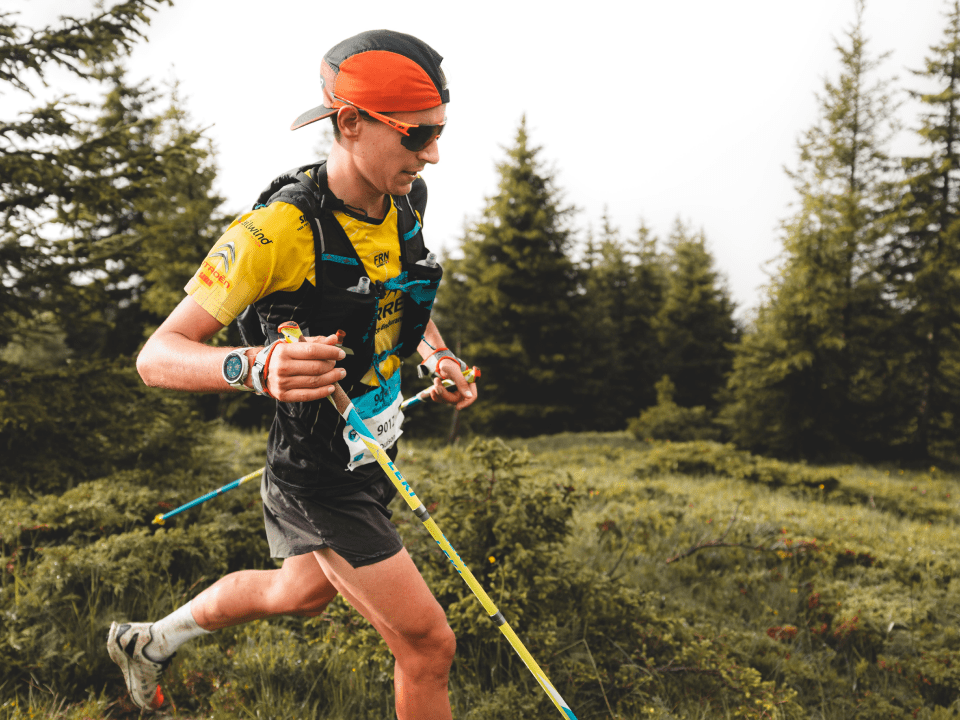
E
Elevation Gain: The total vertical ascent over the course of a trail run or race. (Often, this is the reason of those painful quads.)
Endurance: The ability to sustain physical activity over a prolonged period, crucial for longer trail running distances. See ultra-trail running.
F
Fastest Known Time: FKT refers to the fastest recorded time in a particular trail. An FKT is not an official or organized competition but rather an individual or team’s attempt to set the fastest time on a particular route. Ultra-runner start Karel Sabbe currently holds the FKT for iconic trails like Via Alpina.
Fell Running: A type of trail running that takes place on hilly or mountainous terrain, often characterized by steep descents.
G
GPS Watch: A specialized watch equipped with GPS technology to track and record distance, pace, and other metrics during trail running.
Gravel Grinder: A type of trail race or event that combines off-road and gravel roads, often covering long distances.
Grit X Pro: Polar’s premium outdoor watch, with a roughed and rugged durable design, ultra-long battery life, and best-in-class navigation features. More on Polar Grit X Pro.
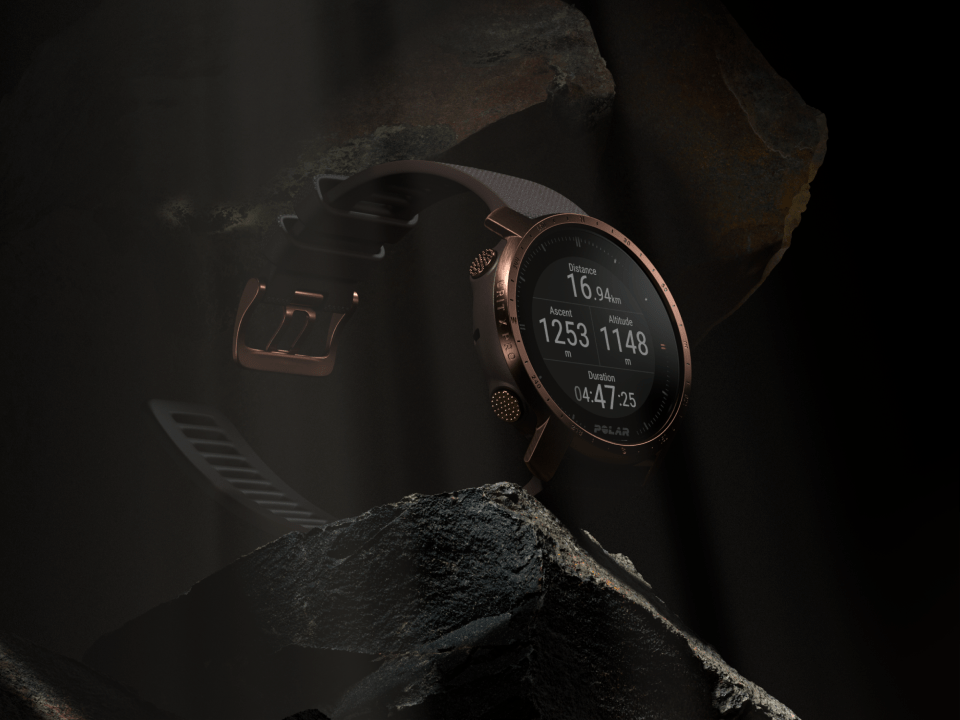
H
Headlamp: A portable light source worn on the head to provide illumination during trail running in low-light or dark conditions. It is a must-have object for trail runners.
Hill Repeats: Intense workouts involving repeated running up and down hills to improve strength and power on hilly trail courses. It may not be your favorite workout, but surely will make you stronger.
I
Incline: The upward slope or gradient of a trail or terrain, often measured in percentage or degrees.
Intervals: Structured workouts that involve alternating periods of high-intensity running with periods of rest or active recovery.
The Kickstart Guide To Trail Running
Whether you’re a complete newbie seeking to explore the trails or an experienced road runner eager to transition to off-road adventures, our guide to trail-running will get you started.
J
Jeep Trail: A trail that is wide and rough, often accessible to off-road vehicles like Jeeps, commonly used for trail running.
K
Kilometer (Mile) Markers: Signs or markers along the trail that indicate the distance covered in kilometers.
Kilian Jornet – Widely regarded as one of the greatest trail runners of all time. Kilian has set numerous speed records and won multiple championships in ultra-distance races and skyrunning events. He often climbs and runs in extreme mountainous environments, pushing the limits of human endurance. See Mountain Goat.
L
Long Run: A trail run that is longer than the typical distance covered during regular training runs, often done to build endurance. If you’re an ultra-runner, your long run can usually last anything from six to ten hours. See ultra-trail running.
Lactic Acid: A byproduct of intense exercise that can cause fatigue and muscle soreness during and after trail running.
Lottery: The painful process that ultra-runners face when they want to enter a well-known trail race. Fun fact: a trail runner is more likely to win millions in the actual lottery than get into the Western States or Hardrock races. A sensitive subject for some runners.
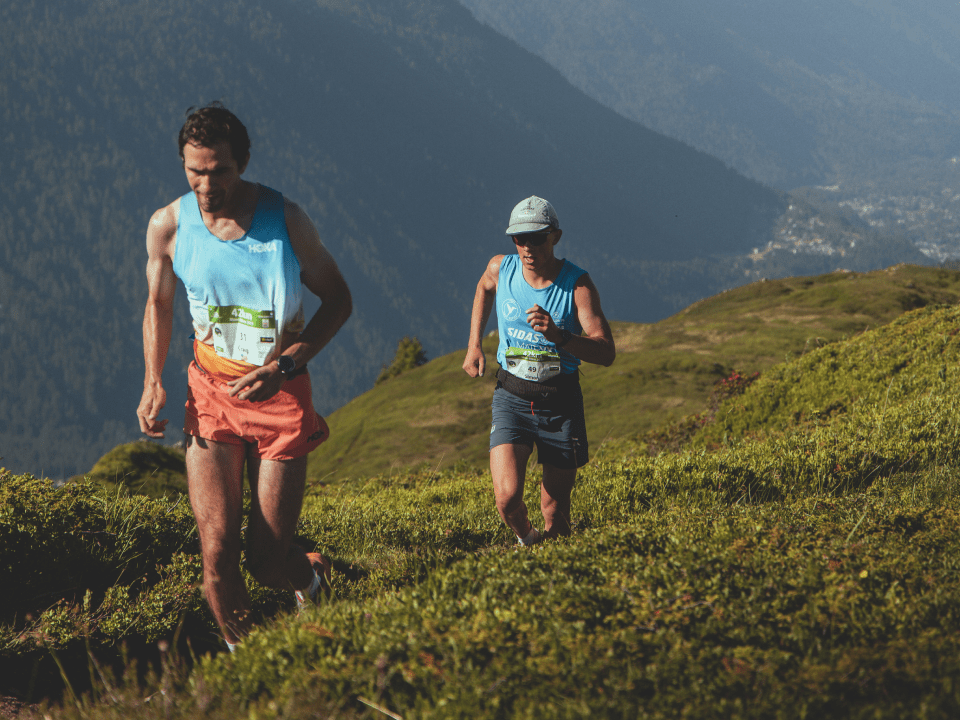
M
Mud Run: A trail race or event that takes place in muddy conditions, often involving challenging terrain and obstacles.
Mountain Goat: This is the name used to describe an agile, speedy mountain or fell-runner! Also, a generic name for mountain-dwelling goats, such as the beautiful Chamois that can be found in the Alps. Kilian Jornet is often called The Mountain Goat, the OG greatest of all time trail runner. See Kilian Jornet.
N
Night Running: Trail running during the nighttime, usually requiring the use of a headlamp or other light source.
O
Obstacle Course Racing (OCR): A type of trail race that includes various obstacles such as climbing walls, mud pits, and rope climbs.
Out-and-Back: A trail running route where runners go out along a trail and then return the same way to the starting point.
P
Peak Bagging: The activity of summiting or reaching the top of multiple peaks or mountains during a trail run or race.
Pack Line: A group of runners who run closely together in a line during a trail race to navigate technical sections or trails.
Poles: Poles can greatly add to a more efficient trail running experience, primarily while walking uphill. They are usually a must-have item during longer trail running races with lots of sustained or steep terrain. Walking with poles can be a good way to conserve leg power as it allows athletes to engage otherwise unused muscles in the upper body.
Power Hike: Most experienced trail runners find it more efficient both speed and energy-wise to adopt a fast hike for steeper uphill trails, rather than trying to run these sections.
Q
Quad-Busting: A term used to describe a particularly challenging trail run or race that puts significant stress on the quadriceps muscles.
R
Rock Garden: A section of a trail with many rocks and boulders that require careful foot placement and navigation.
River Crossing: Crossing a river or stream during a trail run, often requiring careful footwork and balance.
Runnable: One of the most relative terms in trail running. Any terrain on the trails that does not include a river crossing, boulder field of hot lava, or icy cliffs. In theory, it is the opposite of a technical trail. In reality, it can include just about anything.
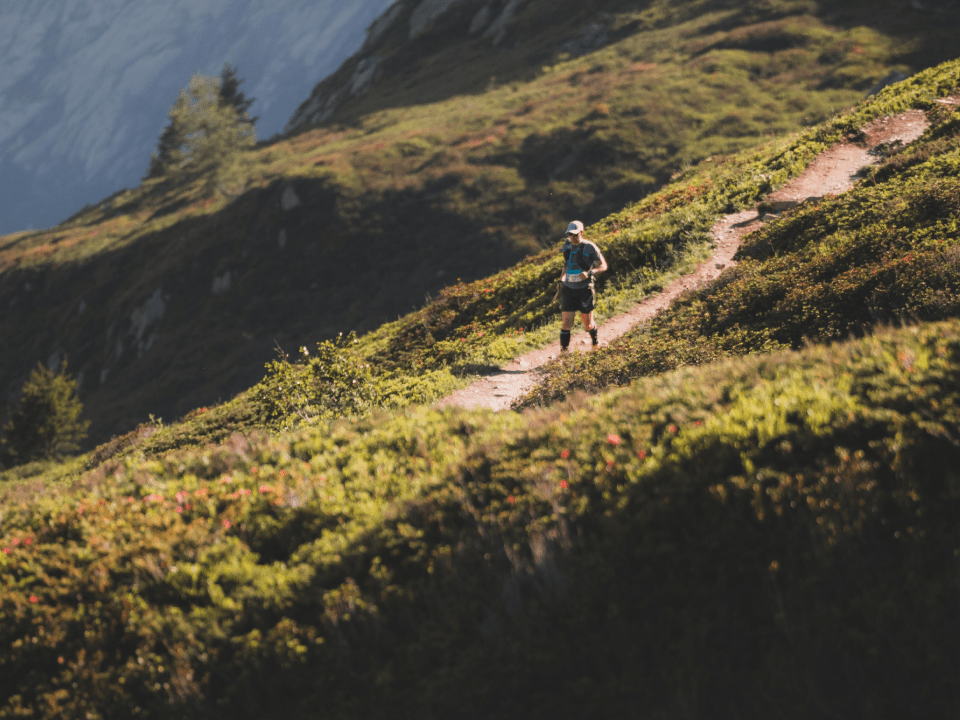
S
Scrambling: Using hands and feet to climb or ascend steep or rocky sections of a trail.
Singletrack: A narrow trail that allows for only one runner at a time, often found in forested areas and more technical terrains.
Sky running: When you run above 2,000 meters of altitude over a very technical terrain with a significant amount of climbing and descent. See altitude training.
Switchback: A very rough trail that takes a zig-zag pattern up or down steep terrain and makes you question why trail running is fun.
T
Technical Trail: A trail through challenging and rugged terrain, including rocks, roots, steep inclines, or obstacles. This is often what makes trail running fun.
Trail Shoes: Footwear specifically designed for trail running, offering increased traction, stability, and protection compared to road running shoes.
U
Ultra-Trail Running: Long-distance trail running events that typically exceed the distance of a traditional marathon (26.2 miles/42.195 kilometers).
V
Vertical Kilometer (VK): A race or challenge that involves ascending 1,000 meters in a relatively short distance.
W
Water Crossing: Crossing a body of water, such as a river or stream, during a trail run, often requiring careful navigation or using stepping stones.
Wildlife Encounters: Encounters with animals or wildlife during trail running, which can include both positive and potentially dangerous interactions.
X
X-Training: Engaging in cross-training activities such as cycling, swimming, or strength training to supplement trail running.
Y
Yaktrax: Traction devices that can be attached to trail running shoes to provide better grip and traction on icy or snowy trails.
Z
Zero-Drop Shoes: Trail running shoes that have no difference in height between the heel and the toe, promoting a more natural foot strike and alignment.
If you liked this post, don’t forget to share so that others can find it, too.
Or give it a thumbs up!
I like this article
Please note that the information provided in the Polar Blog articles cannot replace individual advice from health professionals. Please consult your physician before starting a new fitness program.
